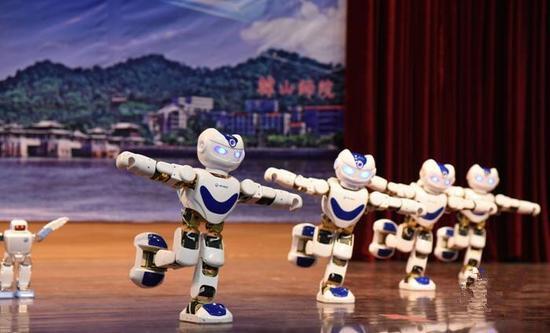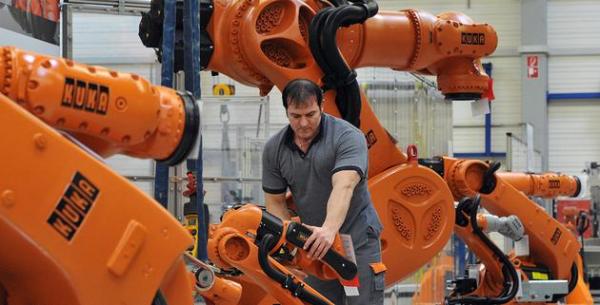

On December 27, the national development and reform commission (NDRC) issued the three-year action plan (2018-2020) on enhancing the core competitiveness of the manufacturing industry, which aims to implement the industrialization of key technologies in nine key areas, including intelligent robots, intelligent automobiles and new materials. The industry believes that in the next few years, intelligent robots are expected to become the next blue ocean of intelligent manufacturing in China. What else is important to watch in today's robotics industry? Here's how.
Smart robots are expected to be the next big blue sea, according to the NDRC's three-year action plan
The NDRC issued the three-year action plan (2018-2020) on enhancing the core competitiveness of the manufacturing sector, which covers nine key areas, including intelligent robots, intelligent cars and new materials. Research layout of fully autonomous programming industrial robots, man-machine cooperative robots, dual-arm robots and other new generation of intelligent robots, to seize the commanding heights of industrial development. The industry believes that in the next few years, intelligent robots are expected to become the next blue ocean of intelligent manufacturing in China.
About 500 makers from all over the country gather in chaozhou Korean division to make you an eye-opener

Moving robot dance, 3D intelligent creation, maker education and sharing... From 23rd to 24th, the second national primary and secondary school maker education forum and the east guangdong youth maker culture festival was held in hanshan normal university. Nearly 500 people from 27 provinces and cities gathered in chaozhou to discuss maker education, display makers' works and participate in competitions.
During the period, 84 teams from 46 participating schools in the three cities of eastern guangdong brought 116 pieces of technology makers' works, and carried out competitions such as body-moving robot race walking relay, robot football, bionic robot design, intelligent robot snake race, characteristic school-based maker curriculum design and underwater robot cooperation.
Robot participates in "five water treatment"

Yesterday, jiaxing through the opening district jibei street lichi manor, the technical personnel are using the "pipeline robot" to the area of the rain pollution pipe network screening, the main test whether there is rain pollution pipe and pipe blockage and damage. It is reported that the rain water will eventually flow into yanjing port, and the drainage inspection can avoid the mixed discharge of rain and pollution, resulting in the pollution of the river, so as to promote the "five water treatment" work.
Midea's acquisition of German robot maker kuka: to dominate the Chinese market
Till Reuter, chairman and CEO of German industrial giant Kuka, said the company wants to be the leader in China's robot market.
Kuka, the world's largest auto-robot maker, derived 80% of its revenue from auto-robots in 2009, but that share has fallen to 50%. This is mainly because the robot market for the automotive sector is growing at only 3-5 per cent, compared with more than 10 per cent for all other sectors.

China's industrial robot development trend forecast: 2018 production is expected to exceed 150,000 sets
China's industrial robot output in November 2017 was 11,243 units, up 45.8 percent year on year, according to data from a large database of the China business research institute. From January to November 2017, China's industrial robot production reached 118,169 sets, with a cumulative increase of 68.8%. Production is expected to reach 125,355 units in 2017, up 73.1% from a year earlier.
With the gradual maturity of industrial robot technology, promoting the promotion and popularization of industrial robots in China, the future development prospect of the Chinese industrial robot market can be expected. China's industrial robot production is expected to expand further in 2018. China's industrial robot production is expected to exceed 150,000 units in 2018, reaching 151,286 units.
Foreign media: China's robots may pose a global threat to the world
On Dec. 26, bloomberg reported that China is installing more robots than any other country, which could affect every other country.
The International Federation of Robotics estimates that China's robot shipments surged 27 percent last year to a single-country record of about 90,000 units, nearly a third of the global total, and will nearly double to 160,000 units by 2019.
A report released this week by bloomberg industry research said the enthusiasm for using robots has not yet dented wages in China, but could affect the global economy. Automation may improve productivity and export competitiveness, but greater use of robots could also exacerbate domestic income inequality and hurt consumption.

